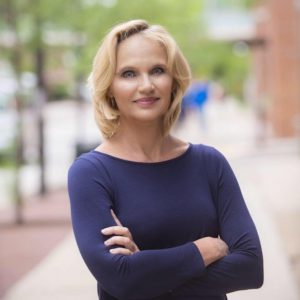My ASA Story: Alexandra L. Hanlon, Professor of Practice, Center Director, and Collaborative Biostatistician
In 2019, I arrived at Virginia Tech to build and direct the Center for Biostatistics and Health Data Science. My team and I work with researchers from across Virginia Tech, as well as beyond the university community, to improve health with data within a team science model. We do this by creating networks and collaborations across disciplines and by providing expertise in statistics, data science, statistical programming, and data management.
I could not ask for a more fulfilling position, and writing this article provides an opportunity to reflect on my path and the factors that paved my way. Certainly, there are both individual and external factors that shaped my journey. Individual factors include strong technical, communication, and leadership skills, while external factors include having a strong professional network, institutional support, and recognition among my peers.
Before expanding on the contributing factors, I want to speak to how I ended up in health statistics. As a graduate student in 1990, I became a member of the American Statistical Association and volunteered to help with the Joint Statistical Meetings in Anaheim, California. During that meeting, I pored through binders of open job positions and met with a host of employers from various fields, including health, sports, environmental, and quality. I quickly settled on biostatistics for a personal reason: My mother died at the young age of 37 from breast cancer.
My first career position as a biostatistician was with the American College of Radiology in Philadelphia, a connection I made at JSM. My early work with clinical investigators and junior faculty fueled a passion for the practice of statistics and facilitating scholarship among others. With this came responsibility for advocating for the critical role applied statisticians play in translational science and team science framework.
In terms of technical skills, I have advanced degrees in mathematics and statistics. As a practicing statistician in the health sciences—often without internal access to methodological experts in statistics—I relied on ASA sections and discussion groups to ensure my work incorporated appropriate and rigorous methods for the setting.
Both written and verbal communication are critical to the success of a collaborating biostatistician. I have a passion for writing, and I continue to refine my ability to translate technical findings to a lay audience. The importance and depth of strong communication skills for the success of a collaborating statistician became even more clear to me at the 2012 Conference on Statistical Practice, the inaugural conference in Orlando, Florida. Following that meeting, I found myself working to improve in areas beyond the knowledge of methods or programming skills, including time management and accessibility, responsiveness, kindness, listening skills, empathy, and cultural competence.
Finally, in terms of personal leadership skills, I credit the ASA for putting me on a leadership trajectory. I volunteered to serve as an ASA chapter officer in Philadelphia during the early 2000s, and then expanded my efforts to the national level with the Council of Chapters Governing Board. I currently serve as a COCGB representative to the ASA Board of Directors and have served on various committees along the way. These experiences have taught me how to work more effectively with people and provided experiences to practice more powerful ways to lead.
Networking is an external factor important for establishing, building, and nurturing long-term, mutually beneficial relationships. My networks established through the ASA—whether as a participant at JSM or CSP, organizer for events such as traveling courses, or contributor through service roles—have been critical to my career development. Networks provide opportunities to connect with mentors; advisers; and resources needed to foster growth, increase your visibility, develop your skill set, and improve your soft skills.
Other external factors critical for career growth include having institutional support and peer recognition. I cannot say enough about Virginia Tech’s leadership and their progressive thinking and commitment to professional development and faculty retention. Virginia Tech has strong connections with the ASA, a path that connected me to them. Finally, I became an ASA Fellow in 2019 in recognition of my contributions as a collaborative biostatistician. This award is a testament to the ASA’s promise to serve as the “big tent for statistics and data science.”
In summary, the ASA has been instrumental to both my personal and career growth. I am grateful to the ASA, my various mentors and advisers, and my peers and colleagues. I am excited to see a continued shift toward team science and practicing statisticians, particularly those who may be practicing outside a statistics department.



















Alex,
Thank you for all that you do for the ASA!
Your chapter summary tool is amazing and
makes District Chair lives much easier.
Well done.
Best,
Maureen